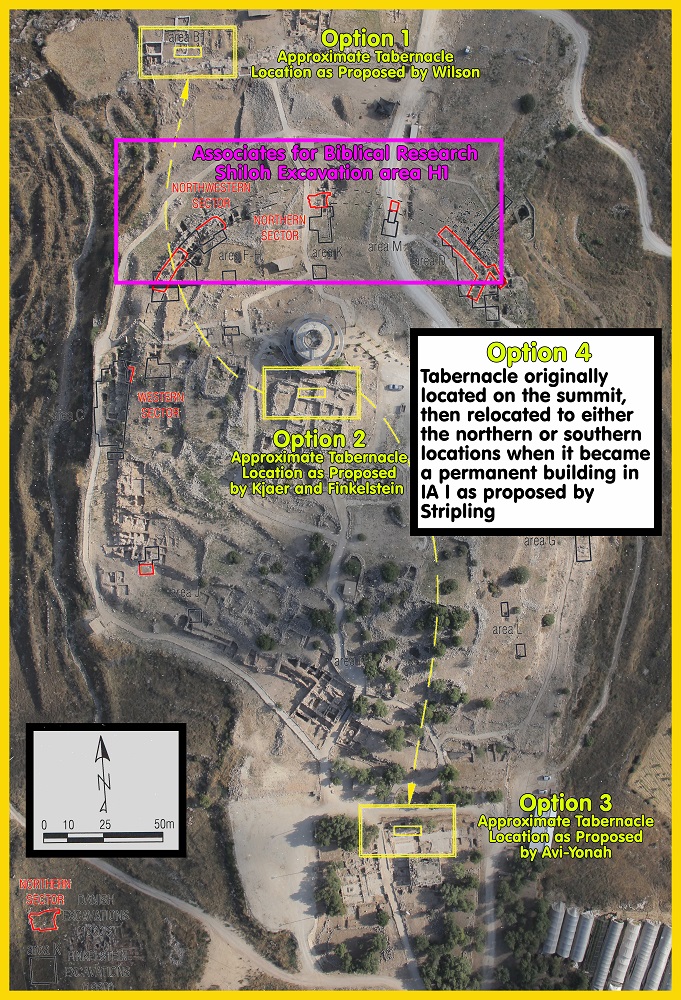![]() The Israelite Tabernacle at Shiloh by Dr. Scott Stripling
The Israelite Tabernacle at Shiloh by Dr. Scott Stripling
Photo Gallery of the 2017 Shiloh Excavations on the ABR Facebook Page
Archaeological Claims about Shiloh
Israeli Archaeologist Israel Finkelstein excavated at Shiloh and has made several claims that are not in accord with the biblical narrative. ABR's excavations at Shiloh will seek to explore those claims, which include:
1. Finkelstein claims that the cultic center had to be on the top of the tell because this was the Canaanite tradition. In his view, if there were Israelites at Shiloh, they did not arrive until the 13th century B.C. or later. Biblical chronology based on 1 Kings 6:1 and other texts places the Conquest at the end of the 15th century BC. The ABR excavation at Shiloh has the potential to evaluate these arguments. For example, if remains of the tabernacle and associated buildings are found in a clear Late Bronze (LB) [1485-1173 B.C.] context, it would be an obvious synchronism between the archaeological data and the biblical text.
2. Finkelstein did not excavate the summit of the tel because he presupposed that there was only shallow soil above bedrock. However, there is a large building on the summit, possibly from the Crusader era, that may protect and preserve remains from the tabernacle or its associated buildings. The ABR excavation looks to excavate this building down to bedrock in order to explore this possibility.
3. Finkelstein asserts that the massive LB bone deposit in Area D was entirely from the site's Canaanite's inhabitants. In this, he presupposes a late date for the Conquest (around 1230 B.C.). According to 1 Kings 6:1, Judges 11:26, and Joshua 18:1, the Israelites arrived at Shiloh about 1400 B.C. They immediately erected the tabernacle in order to practice the biblical sacrificial system. The bones in the deposit are almost entirely from animals prescribed for Israelite sacrifice. The ABR excavation at Shiloh will reexamine the evidence from the bone deposit and see how it compares to the biblical text.
4. In public lectures, Finkelstein has made statements which differ his own Final Publication at Shiloh. He now seeks to minimize the Iron II (980-587 B.C.) or 1st Temple Period occupation at Shiloh. This contradicts 1 Kings 11:29 and 14:2-4, and Jeremiah 7:12-14, 29:6-9, and 41:5. The ABR excavation at Shiloh has the potential to reveal Iron II remains, illustrating the reliability of the biblical text during this era.
Why not Join ABR as a volunteer to help evaluate these assertions and experience Israel like never before? »
Possible Tabernacle Locations.












